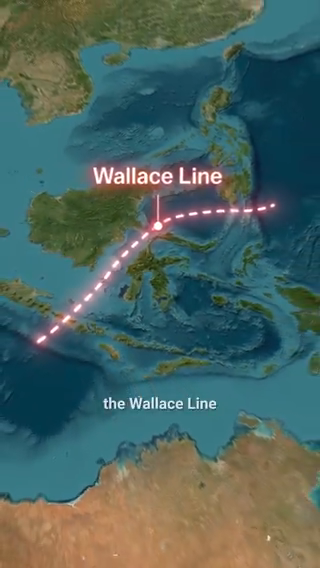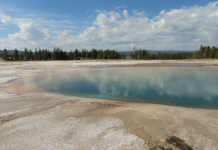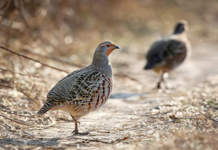The Wallace Line is one of the most significant biogeographical boundaries in the world, named after the British naturalist Alfred Russel Wallace.
Video Overview:

The Wallace Line runs through the Indonesian Archipelago, separating the ecosystems of Asia from those of Australasia (Wallacea).
Alfred Russel Wallace identified this line during his travels in the Malay Archipelago in the 19th century.
Key Characteristics:
Faunal Division:
To the West: The fauna here is more characteristic of Southeast Asia, with species like tigers, monkeys, and hornbills.
To the East: The fauna is more akin to that found in Australia and New Guinea, with marsupials, cassowaries, and bird species like the birds of paradise.
The transition between these faunal regions isn’t abrupt but represents a gradient where species from both sides mix to some extent, particularly in the islands closer to the line.
Ecological Importance:
The region around the Wallace Line is incredibly biodiverse, showcasing a mix of species from two major biogeographic realms. This area contains many endemic species due to its isolation.
The line’s existence supports theories of evolution by illustrating how geographic barriers can lead to speciation. Wallace’s observations here influenced his own development of evolutionary theory, paralleling Darwin’s work.
Modern Context:
Understanding biogeographical boundaries like the Wallace Line is crucial for conservation efforts, especially in an area as fragmented and ecologically rich as Southeast Asia and Oceania.
This line also becomes relevant in discussions about how climate change might affect species distributions, potentially altering biogeographical boundaries.
Cultural and Scientific Impact:
Wallace’s observations and the concepts like the Wallace Line have had a lasting impact on biogeography, ecology, and evolutionary biology, highlighting the importance of fieldwork in natural sciences.
Extension of the Concept:
Further east of the Wallace Line, there’s Lydekker’s Line, which marks another biogeographical boundary closer to Australia, where faunal characteristics become even more distinctly Australasian.
Weber’s Line is considered an extension or a midpoint between Wallace’s and Lydekker’s lines, where the transition between the fauna becomes even more pronounced.
The Wallace Line isn’t just a historical footnote but an ongoing concept in ecology and biogeography, providing insights into how species distribute and evolve across geographic barriers.
It’s a testament to Wallace’s foresight and the enduring relevance of his work in understanding life’s diversity on Earth.






